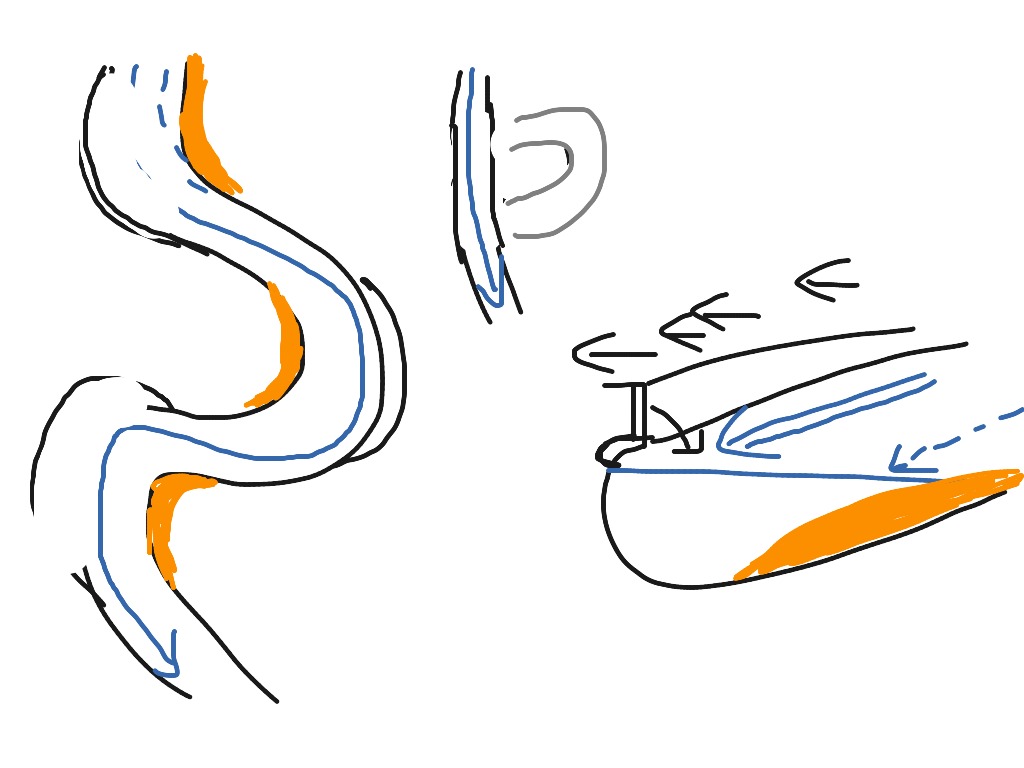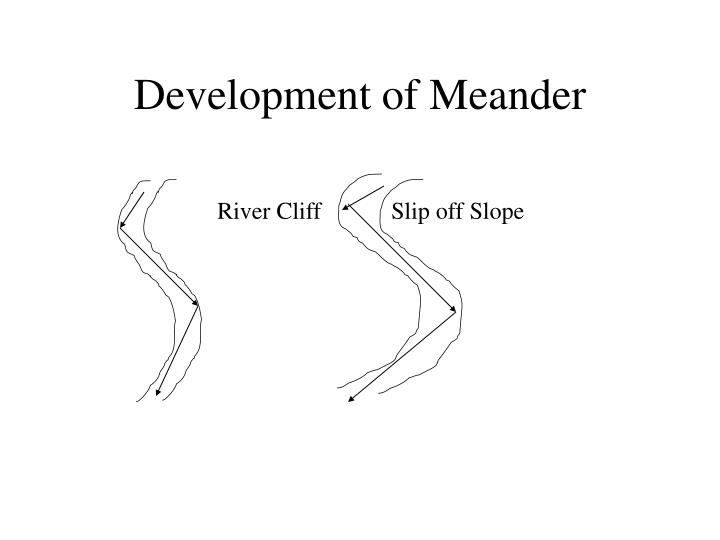

Whether a river will flow straight or become sinuous or meander is determined by its Sinuosity Index. Width of Meander: The area between the two banks.

The height of the meander between its own valley and the sinuous axis. Meander gradients are usually more gentle and they experience lateral (sideways) erosions which widen the channel of the river at the middle and lower courses of a river. Meanders are typical landforms at the middle and lower courses of a river. What type of landforms are meander gradients? The term meander has been derived from the Greek word “Maiandros,” the old name of a river in Turkey, Menderes. Thus, sinuous curves or bends are formed, known as the meanders, and the course itself is known as the meandering course. In its middle course, a river generally starts to erode one bank and deposit on the other. What are the characteristics of a meandering river? The formation of meanders is due to both deposition and erosion and meanders gradually migrate As the river erodes laterally, to the right side then the left side, it forms large bends, and then horseshoe-like loops called meanders. A meander is the cause of both erosonal & depositional activies of the river.Ī larger river channel means there is less friction, so the water flows faster. What are meanders Class 7 Geography?Ī meander is a winding curve or bend in the river. The river flow is diverted by an obstruction allowing the river to do lateral erosion work. Meanders generally form under conditions of a gentle slope and sufficient water in rivers. What is meander in geography class 9? How are meanders formed Class 6? The Ganga in India is famous for its meanders. At the site of the disturbance, such as a fallen log or a collapsing animal burrow, the path of the stream and the velocity of the current change, altering the overall behaviour of the watercourse and resulting in the development of meanders. The position of the curves changes over time. The formation of meanders in straight rivers and streams is largely dependent on disturbances. Rivers generally forms a snake like pattern when flowing across a valley floor. Meander is a curve or a bend formed by a river during its course. This is achieved through processes like hydraulic action and abrasion. As the river gains more velocity, the water is pushed to the outside of the river causing more erosion on the outside bend, which forms a steep river cliff. Meanders are formed in the middle course of a river.

#Formation of a meander plus
This is because vertical erosion is replaced by a sideways form of erosion called LATERAL erosion, plus deposition within the floodplain. They are typical of the middle and lower course of a river. Meanders change position by eroding sideways and slightly downstream. Meanders are the result of both erosional and depositional processes. Eventually, the meander may be cut off from the main channel, forming an oxbow lake.

Meanders are produced when water in the stream channel erodes the sediments of an outer bend of a streambank and deposits this and other sediment on subsequent inner bends downstream. As the water flows around a bend it is pushed towards the outer bank of the curve and this increases the levels of erosion, both abrasion and hydraulic action. Meanders often occur in the middle course of a river as the water begins to move at a faster pace. The formation of meanders is due to both deposition and erosion and meanders gradually migrate downstream.As the river erodes laterally, to the right side then the left side, it forms large bends, and then horseshoe-like loops called meanders.


 0 kommentar(er)
0 kommentar(er)
